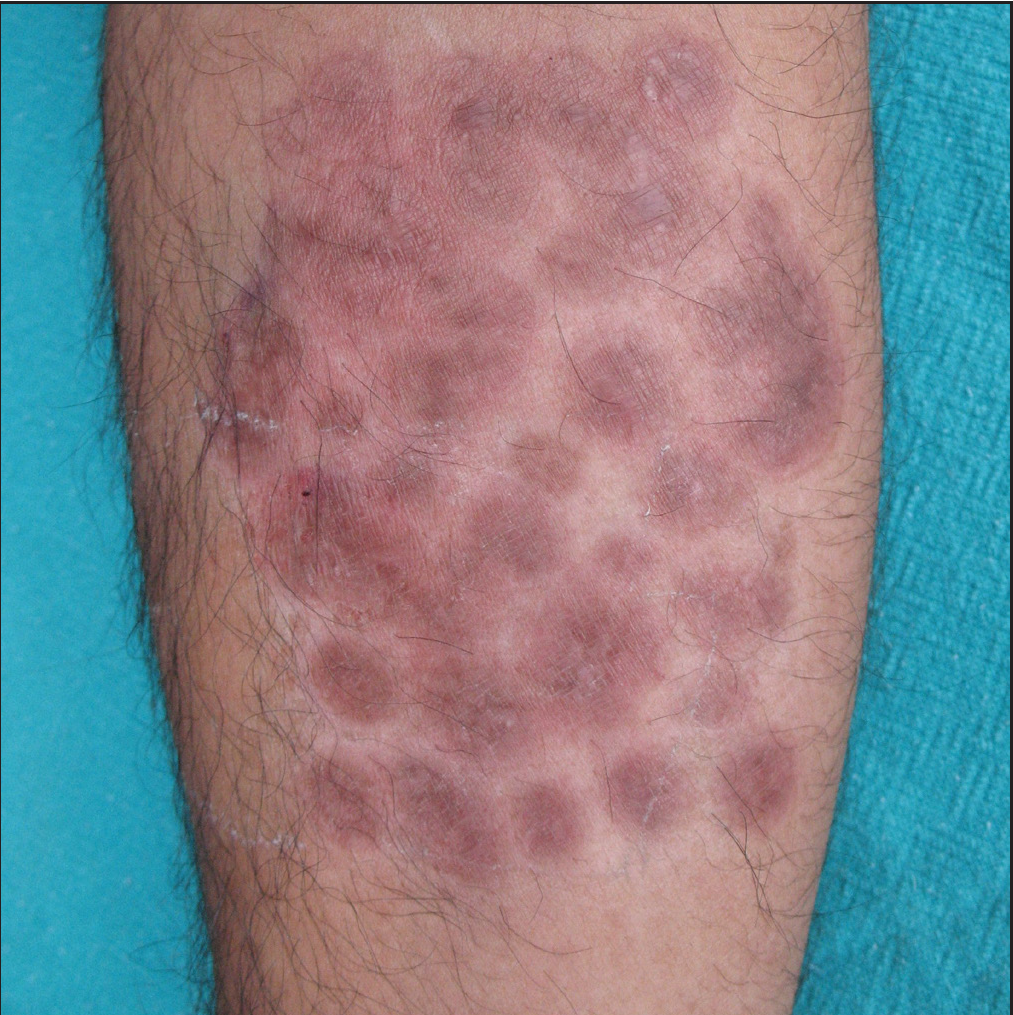Translate this page into:
Dermatitis Artefacta
Corresponding author: Dr. Rohit Kothari, Department of Dermatology, Command Hospital Air Force, Bengaluru, India. rohitkothari3422@gmail.com
-
Received: ,
Accepted: ,
How to cite this article: Kothari R, Vashisht D, Tripathy DM. Dermatitis Artefacta. Indian J Dermatol Venereol Leprol. 2024;90:394-5. doi: 10.25259/IJDVL_922_2022
A 22-year-old male was admitted with depression to the psychiatry ward. He was referred to the dermatology clinic with multiple grouped erythematous-to-hyperpigmented plaques over the right forearm [Figure 1]. He denied any history of self-inflicted injuries. Because of the bizarre morphology of the lesions and the depression, leading questions were asked, revealing a positive history of a recent break-up with his partner. He used to inflict cigarette burns under the influence of alcohol whenever he remembered her and felt sad. He was diagnosed with dermatitis artefacta. Patient also had suicidal thoughts and hence, was started on antipsychotics, antidepressants, and emollients for the skin lesions. Follow-up at 8-week revealed no new skin lesions or suicidal thoughts, and his depression was well controlled on medications.

- Multiple grouped erythematous-to-hyperpigmented plaques over right forearm
Dermatitis artefacta is an uncommon psychocutaneous disorder. The patient consciously create lesions to attract attention, satisfy psychological needs, or evade responsibility. If left untreated, it may lead to severe self-mutilation. A dermatologist’s role may be crucial in the initial diagnosis and timely referral to the psychiatrist.
Declaration of patient consent
Appropriate patient consent has been obtained.
Financial support and sponsorship
Nil.
Conflicts of interest
There are no conflicts of interest.





